
Now available
Gagosian Quarterly Winter 2022
The Winter 2022 issue of Gagosian Quarterly is now available, featuring Anna Weyant’s Two Eileens (2022) on its cover.
December 18, 2017
This year marked the fortieth anniversary of Walter De Maria’s The Lightning Field and The New York Earth Room, both permanently installed in their respective homes of New Mexico and New York City in 1977. During a gala at the Dia Art Foundation celebrating this momentous occasion, artist Terry Winters, longtime friend of De Maria and member of the installation crew for The Lightning Field, delivered the following homage. A recollection of their trip to New Mexico and the surrounding area, the speech attests to the power—the “rhythm and pulse of ancient mystery”—that continues to imbue De Maria’s artworks into the present day.

Walter De Maria, The Lightning Field, 1977. Photo by John Cliett
Walter De Maria, The Lightning Field, 1977. Photo by John Cliett
Walter De Maria:
RELIGIOUS, SENSITIVE, GOOD
WARM, LOVING, HELPFUL
PROFESSIONAL, ELEGANT, INTELLIGENT
DASHING, FLASHY, WITTY
POSSESSED, ENERGETIC, CRAZY
MOODY, MYSTICAL, MINIMAL
These are Walter’s own words.
He used them at one time to describe his art dealers—
I’m using them now to describe Walter himself.
And I’m speaking here tonight because of my involvement with
The Lightning Field.
I was a member of the installation crew.
One of five New Yorkers—
(Walter himself, of course, Helen Winkler,
Robert Fosdick, and Duane Zaloudek)
Who, along with a remarkable team of local citizens,
School kids, and ranch hands, spent a productive time
In western New Mexico constructing The Lightning Field.
Robert Weathers, was also a member of that original group
And has stayed on these past 40 years as
The Field’s constant and reliable guardian.
For all its metrics, ideals, and precision engineering
The Lightning Field is also the product
Of manual labor and practical know how.
And also, of course, the financial support of Dia.
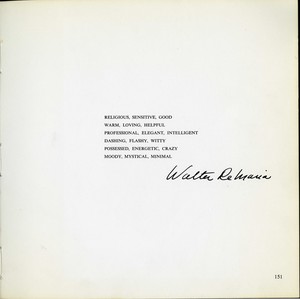
Walter De Maria, “My Dealers” from The New Avant-Garde, Praeger Publishing, 1972
Everyone involved was working together to realize
Walter De Maria’s ‘MOODY MYSTICAL MINIMAL’ vision.
Walter’s brand of minimalism somehow embraced
The energy and scale of the universe at large.
I’m not joking.
The totality of earth and sky is engaged—
Including the six sacred directions
Of the nearby Zuni and Navajo.
A complete metaphysical landscape is activated.
For Walter, the invisible was real,
A virtual sculptural force actualized.
And he was able to deliver that unseen power
Both metaphorically and physically.
It isn’t an exaggeration
To say that Walter’s work is awe-inspiring.
And thought-provoking—
It pushes all the right ontological buttons.
One story—
When construction on The Lightning Field was completed
Walter offered Robert Fosdick and myself a bonus—
An all-expenses paid trip to Las Vegas, Nevada.
For Walter, the invisible was real, A virtual sculptural force actualized. And he was able to deliver that unseen power Both metaphorically and physically.
Terry Winters
Plus, he wanted to show us the sights—
Including his nearby sculpture Las Vegas Piece.
Walter made us an offer we couldn’t refuse.
So, the three of us flew to Vegas, rented a maroon Chrysler
Cordova at the airport, and immediately drove out
Into a remote valley north of Lake Mead.
The Overton Motel was our base of operations for
The next few days. Walter knew the guy who ran the place.
And our first order of business was to see Las Vegas Piece.
Some years before, Walter had used a bulldozer to cut a few
Shallow lines into the desert floor.
The sculpture was now overgrown and somewhat difficult to find.
But we did eventually track it down, cleared some brush
And walked the entire three miles of the sculpture—
A simple geometric figure whose form can only be discovered
At ground level. Envisioned, over time.
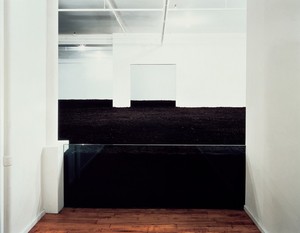
Walter De Maria, New York Earth Room, 1977. Photo by John Cliett
Double Negative was our next destination.
Walter admired Heizer’s work and they were friends.
Both were from California, and both had a connection to
That Western landscape, to that space.
The deep cuts of Double Negative
Were a perfect counterpoint to the lightness of Walter’s drawing.
Each piece equally radical and wildly ambitious—
Icons of Land Art.
Our tour then continued with a visit
To the astonishing Hoover Dam,
Before pressing on to Las Vegas itself.
Caesar’s Palace was to be our first stop.
The Vegas arrival proved difficult.
We didn’t have a reservation and
Evidently didn’t fit Caesar’s demographic,
Or somehow seemed suspicious.
In any case, we were turned away.
They didn’t want our business.
I can still remember the animated argument
Between Walter and the hotel manager.
It was a blessing in disguise.
We headed over to the Sands Hotel
Where Walter promptly booked three executive suites.
A very cool move, and a much better situation. In every way.
After finding the rooms and dropping our bags,
We toured the Casino, had a few drinks,
And caught the late show in The Copa Room.
Dinner and Dionne Warwick.
Total perfection.
The three of us sat beside the stage
Listening to the authentic voice of a great popular artist.
Walter’s own pop music aspirations
Were put aside when he left The Primitives,
The band he formed with Tony Conrad,
John Cale, and Lou Reed.
That group would later become The Velvet Underground.
Walter never looked back but
Once a drummer, always a drummer,
And a percussive sensibility informs all of his work.
Walter kept the beat. The beatitude—
That rhythm and pulse of ancient mystery
Found deep inside the contemporary imagination.
Walter De Maria:
MUSICAL, MAGICAL, MEMORABLE
Artwork © The Estate of Walter De Maria. Text © Terry Winters Studio

The Winter 2022 issue of Gagosian Quarterly is now available, featuring Anna Weyant’s Two Eileens (2022) on its cover.
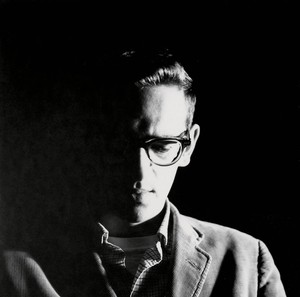
The definitive monograph on the work of Walter De Maria was published earlier this fall. To celebrate this momentous occasion, Elizabeth Childress and Michael Childress of the Walter De Maria Archive talk to Gagosian senior director Kara Vander Weg about the origins of the publication and the revelations brought to light in its creation.
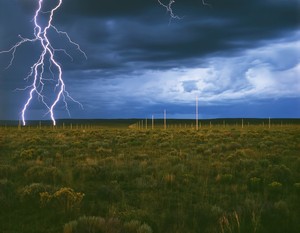
In this second installment of a two-part essay, John Elderfield resumes his investigation of Walter De Maria’s The Lightning Field (1977), focusing this time on how the hope to see lightning there has led to the work’s association with the Romantic conception of the sublime.
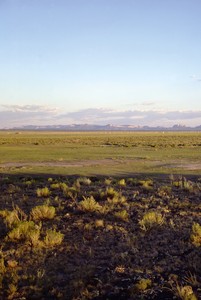
In the first of a two-part feature, John Elderfield recounts his experiences at The Lightning Field (1977), Walter De Maria’s legendary installation in New Mexico. Elderfield considers how this work requires our constantly finding and losing a sense of symmetry and order in shifting perceptions of space, scale, and distance, as the light changes throughout the day.

The Spring 2021 issue of Gagosian Quarterly is now available, featuring Gerhard Richter’s Helen (1963) on its cover.

The inaugural presentation of Frieze Sculpture New York at Rockefeller Center opened on April 25, 2019. Before the opening, Brett Littman, the director of the Isamu Noguchi Foundation and Garden Museum and the curator of this exhibition, told Wyatt Allgeier about his vision for the project and detailed the artworks included.

Lars Nittve investigates Truck Trilogy, Walter De Maria’s last work, conceived in 2011 and premiered at Dia:Beacon in 2017.

David Cronenberg’s film The Shrouds made its debut at the 77th edition of the Cannes Film Festival in France. Film writer Miriam Bale reports on the motifs and questions that make up this latest addition to the auteur’s singular body of work.

The mind behind some of the most legendary pop stars of the 1980s and ’90s, including Grace Jones, Pet Shop Boys, Frankie Goes to Hollywood, Yes, and the Buggles, produced one of the music industry’s most unexpected and enjoyable recent memoirs: Trevor Horn: Adventures in Modern Recording. From ABC to ZTT. Young Kim reports on the elements that make the book, and Horn’s life, such a treasure to engage with.

Louise Gray on the life and work of Éliane Radigue, pioneering electronic musician, composer, and initiator of the monumental OCCAM series.
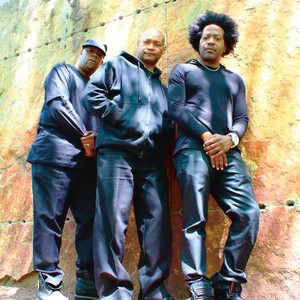
Tracing the history of white noise, from the 1970s to the present day, from the synthesized origins of Chicago house to the AI-powered software of the future.
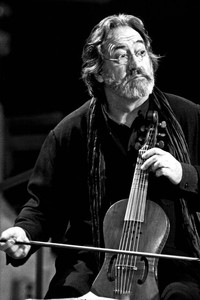
Ariana Reines caught a plane to Barcelona earlier this year to see A Sea of Music 1492–1880, a concert conducted by the Spanish viola da gambist Jordi Savall. Here, she meditates on the power of this musical pilgrimage and the humanity of Savall’s work in the dissemination of early music.